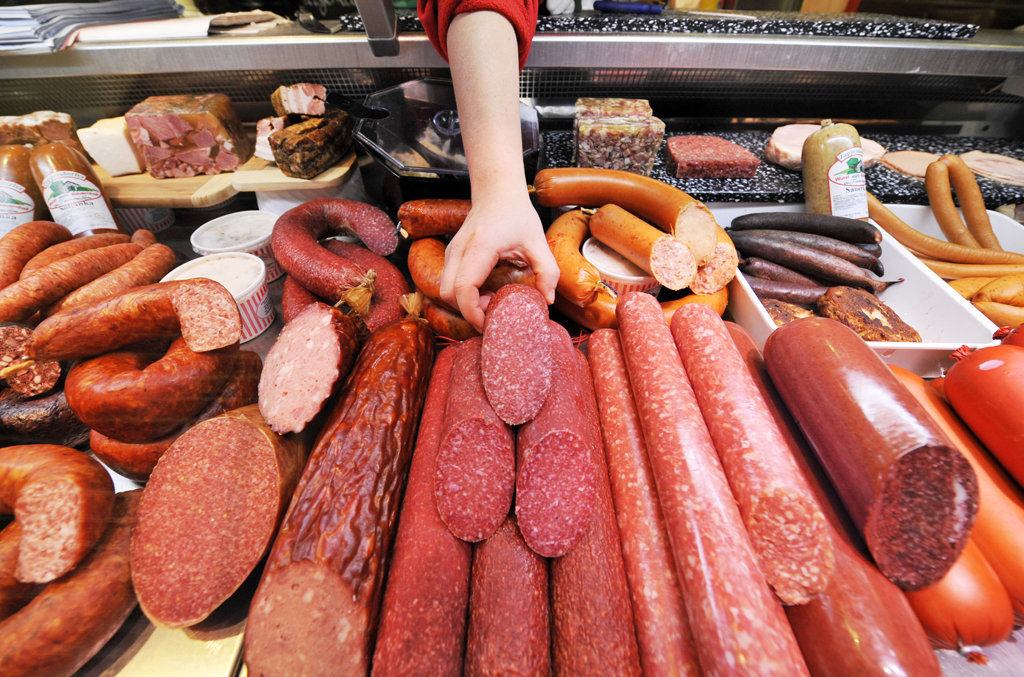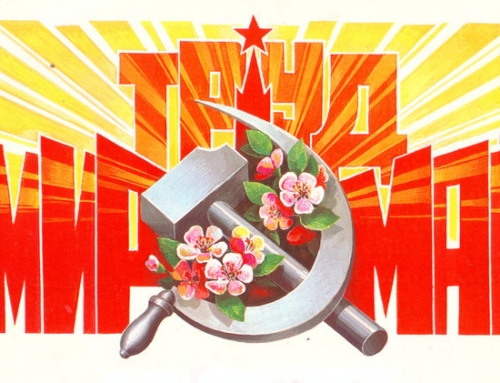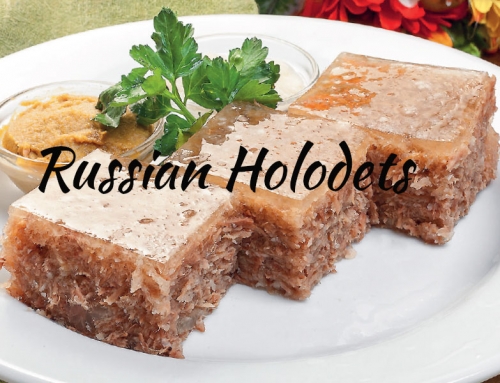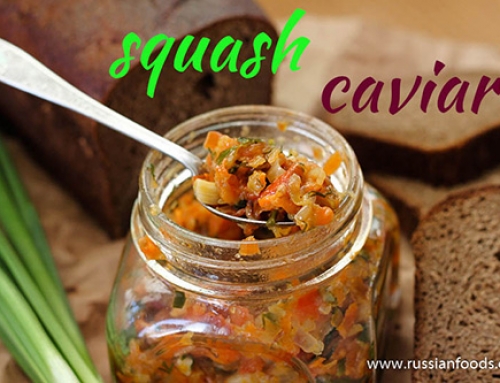Sausages are a quintessential summer food: inexpensive, tasty, and forgiving of even the most inexperienced backyard chefs. Its flavor and texture largely depends the source of meat and type of spices used in the recipe. The hot dog — a close American cousin of the German bratwurst, is the most popular form of sausage in the the U.S; while across the ocean in Europe there is a lot more flavor and variety.
From bratwurst to kolbasa, masterfully preserving meats developed not just as a culinary skill — it was truly a form of art.
It’s important to note that in Russian, the term kolbasa is used to refer to thick sausages made of meat products encased in a casing. Sosiski or сосиски in Russian takes on the meaning of a long thin food products, similar to a hot dog. All semantics aside, the texture and flavor of Russian cold meats was greatly influenced by German masters.
It’s important to note that in Russian, the term kolbasa is used to refer to thick sausages made of meat products encased in a casing. Sosiski (сосиски) takes on the meaning of a long thin food products, similar to a hot dog. All semantics aside, the texture and flavor of Russian cold meats was greatly influenced by German masters.
While mentions of cured and salted meats date back to the days of Kievan-Rus, production of modern-day sausages and Russian kolbasa (колбаса) began during the rule of Peter the Great. Indeed, the first sausage makers in Russia were German migrants who settled in St. Petersburg following an official summons of the czar.
Russian apprentices learned quickly and by the early 1800s were well on their way to developing new recipes that were more familiar to the local palate. Many took their mastery to Moscow where opportunities were greater. Much like today’s newly minted chefs, the sausage makers of the time were interested in exploring their culinary point of view and creating unique flavors.
By the mid 19th century factories producing kolbasas and sausages were springing up in major cities, while in small farm villages across the vast Russian territory sausages continued to be produced at home, following family recipes.
Among the more popular kolbasas were made using unique flavor additives like truffles, pistachios and even goose liver. In more metropolitan cities like Moscow and St. Petersburg, kolbasas took on different textures depending on the method of preparation. Dried, cured, smoked, and boiled, the artisanal kolbsas were influenced not just by the Germans, but also by Greeks, Italians and even Jewish sausage makers.
These days you’ll be hard pressed to find home-made kolbasas, but you can bite into a deliciously savory piece of traditionally crafted Russian sausage.
Available fresh daily from RussianFoodUSA.com, you’ll find dozens of tasty smoked meats, dried salami sausages, and pates. For an authentic taste of Russian smoked meat, try the “Moskovskaya” pork and beef sausages smoked with garlic and paprika it’s perfect as is or grilled on an open fire. The salami “Grypsy”, salami “Karpatskaya” and traditional “Estonian Kielbasa” are both superb additions to an appetizer tray of deli meats.
Do you have a favorite Russian kolbasa or sausage? Let us know by leaving a comment below.






